I recently worked on the best emergency rations review, where the top picks are “lifeboat rations” that compress fat, sugar, and vitamins into edible blocks. Those top companies, like Datrex, are approved by the US Coast Guard to survive in lifeboat-type conditions.
But most people use those blocks as food in their go-bags or vehicle supplies — it’s a great way to cram a lot of calories into a dense, durable package in your away-from-home kits.
Since that food could be sitting in your vehicle’s trunk for a long time, we wanted to see how well the packages stood up to constant high heat.
So we bought a few new packs and threw them in a 200 F (93 C) oven for 8 hours. We tested the two most popular choices, Datrex and SOS, in 3600-calorie packages. The results:
- Neither one exploded or got to the point that you’d make a mess in your trunk/bag
- But the Datrex bars held up much better than SOS, which got mushy inside their wrappers
- Both bars got darker from the ‘cooking’
- Both were still edible, although again the SOS was less pleasant
- The Datrex bars were even (accidentally) run over by a vehicle before testing, which didn’t seem to affect anything in the test
How they’re packaged
How can ration blocks survive being run over by a car or baked in an oven? The Coast Guard has strict standards for how ration blocks are packaged. They have to be:
- Easy to open when wearing gloves
- Divided into smaller portions (eg. the 3600-calorie packs are often in 200-calorie blocks)
- Either sealed in metal containers or vacuum-sealed in plastic with a “negligible vapour transmission rate”
- If they are individually packaged in plastic, they need to be further protected with sturdier outer packaging, usually foil
Most ration blocks are packaged like this: a thick layer of foil with a number of bars inside, each wrapped in thin plastic. As I discovered, those individual wrappings can help each bar hold its shape, even if they’re crushed. The tough outer foil keeps out light, air, and moisture. That’s also why you want to resist the temptation to open the foil and put individual bars in your go-bag: they just won’t hold up as well.
Before approving a ration block for use on lifeboats, the Coast Guard puts it through a rigorous battery of tests, such as putting it in a tumble machine to see how well it’ll hold up being tossed around a ship cabin in a storm.
This is why Coast Guard approved ration blocks are the best convenience food for your go-bag. They won’t melt or attract insects, and they typically have a five-year shelf life. Best of all, you don’t have to cook them, and they’re designed to not make you thirsty.
The unexpected test: running over Datrex bars
The testing began even before I ever touched a ration block. I was standing outside, watching my mail lady put packages in my mailbox. She dropped one on the ground, and I told her to not worry about it. Then she started moving her Jeep forward, stopped, backed up, got out of the Jeep, and put the bag in the mailbox.
I didn’t know what that was about until I opened the bag with the Datrex blocks. Instead of the usual firm rectangular shape, these Datrex bars looked more like parallelograms. She ran them over!
Usually, I’d be upset when someone ran over my packages, but in this case, it was something of a blessing in disguise because it was a stress test I usually wouldn’t think to do myself.
Other than their misshapen appearance, they held up amazingly well. The exterior foil did not seem to be compromised in any way, and because each bar is individually wrapped they held their shape well, even if they were a bit more crumbly than I had expected.
Baking ration blocks
On to the test! We wanted to see how well these blocks would hold up in a car on a hot day, so first, we had to find out how hot a car can get.
We wanted to assume the absolute worst-case scenario, something like a black car parked directly under the sun in Arizona in July. We saw multiple figures stated, anywhere from 100 to 200 degrees Fahrenheit. The National Weather Service says that the inside of a car can exceed 200F, so we settled on 200F. We also decided on an eight-hour cook time since that’s roughly the amount of sun-cooking time each day.
The oven was the obvious choice to bake these, but I briefly considered my electric smoker, since it’s outdoors and if the ration blocks caught fire, at least the fire wouldn’t be in the house. Plus, if the ration bars had a smoky taste, I’d have known that the packaging failed. Unfortunately, I could not get it to hold at 200F—it wanted to hang at around 225F—so I had to resort to the boring old oven.
I set my oven to 200F, put the blocks on a baking tray, placed them in the oven, set a timer for eight hours, and walked away.
What happened in the oven?
I checked on the blocks a few times over the course of the day, and amazingly they did not catch fire. When the eight-hour alarm went off, I pulled them out and gave them time to cool.
When I returned to touch the blocks to see how cool they were, I noticed something interesting. While the baked Datrex bars were as firm as, or firmer than, the unbaked ones, the baked SOS bars were squishy. I gave them more time to cool but was increasingly curious about what I would find.
I started by opening the uncooked bars. The Datrex bars had held up pretty well considering they were run over by a truck. The SOS bars are much longer and weren’t as crumbly as the Datrex, which is to be expected because they hadn’t been run over by a truck.
I then opened the cooked Datrex bars. Carefully, because they were still pretty hot. The individual plastic wrappers felt greasy. At first I thought the plastic had melted, but I suspect that the fat in the bars leaked through the plastic.
The cooked bars were clearly darker than the uncooked bars. Tasting them side by side, the cooked bars tasted like a well-done cookie, but the fundamental flavor profile was the same. Interestingly, the individual cooked bars did feel firmer than the uncooked ones. I’m not sure if the packet I cooked wasn’t hit as hard by the truck or if the ingredients were somehow solidified in the heat.
The SOS bars did not hold up so well. When I cut the packet open I was afraid I would dump out sugary lava. It wasn’t quite that bad, but it was close. Some of the bars were stuck inside the packet. The individual bars were much darker and limp. Inside each individual plastic wrapper was a well-formed block of mush. I did not try to eat them.
However, I will say that once the SOS bars had cooled, they did re-solidify. But they just did not hold up as well as the Datrex bars. I would be afraid that they would soften in a bag or vehicle on a hot day, albeit they’re unlikely to get as hot as they did in my oven.
Other observations
Both the Datrex and SOS bars are coconut flavored, but that doesn’t mean they taste the same. The SOS bars have a much stronger flavor, which I enjoyed, but my wife and children preferred the Datrex bars. I consider that another win for Datrex because it has an inoffensive flavor that most palates will find acceptable. It’s ostensibly coconut flavor, but they taste more like a butter cookie.
Another thing I like about the Datrex blocks is that they are split into 18 bars while the SOS blocks are split into 9 bars. It’s the same amount of calories either way, but you can more precisely portion the Datrex bars.
Finally, another small win for Datrex is that there is a notch in the foil so the package is easy to tear open with your hands. The SOS package doesn’t have such a notch, so I had to cut the foil with a knife. While you ideally have a knife in your go-bag, it’s nice to be able to get to your food without digging for a tool or possibly cutting yourself. After all, one of the major wins of ration blocks is convenience.
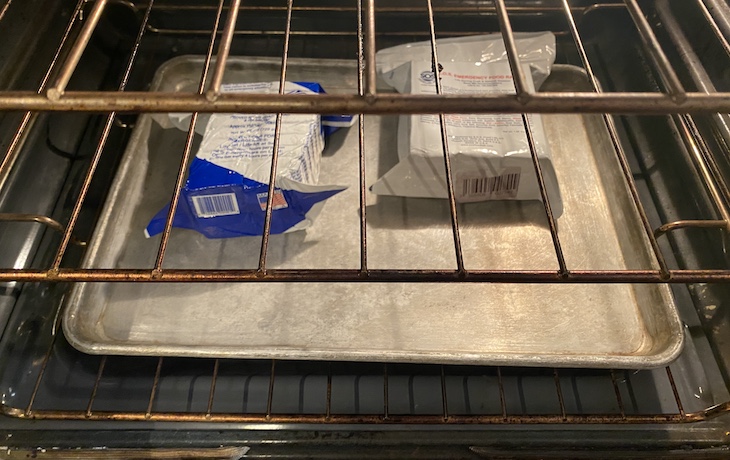
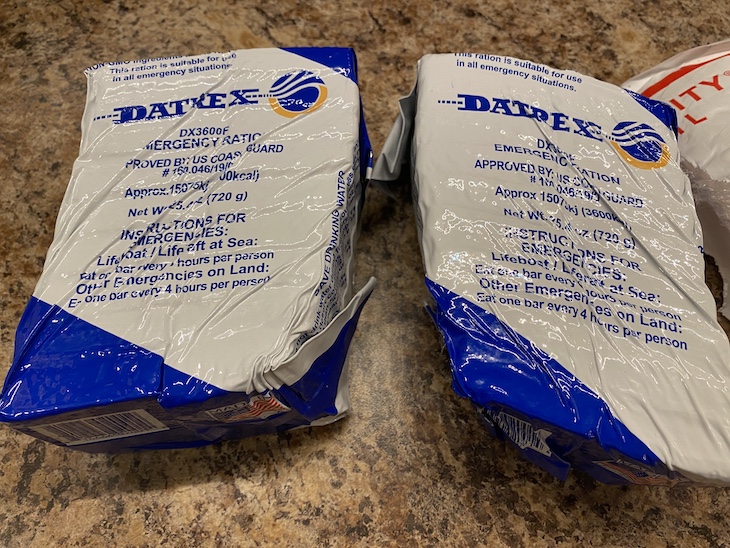
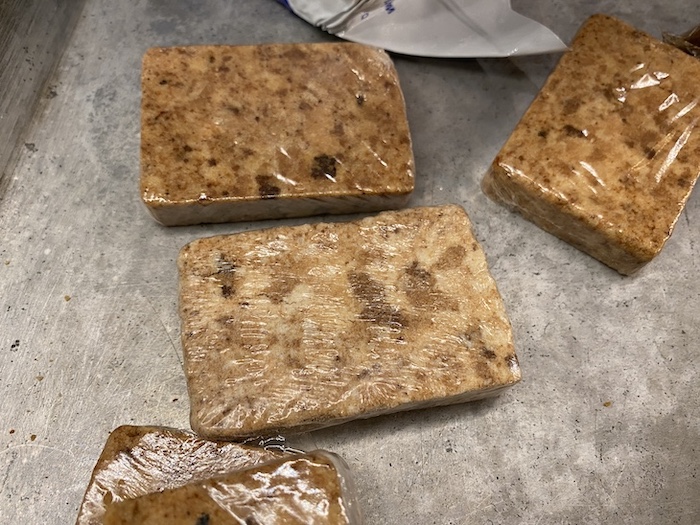
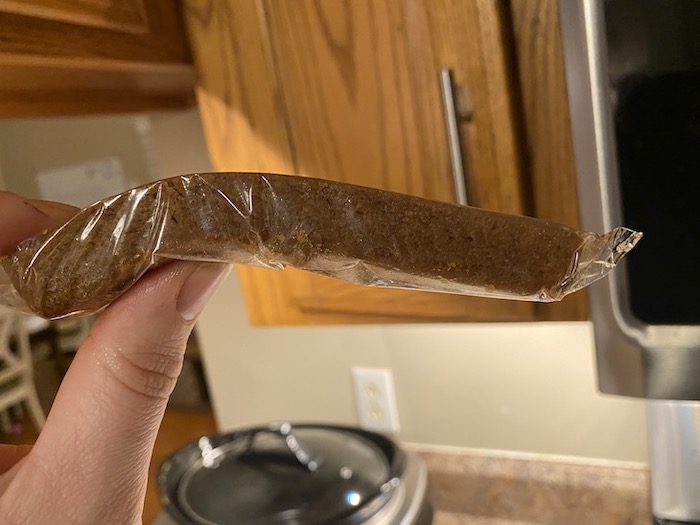
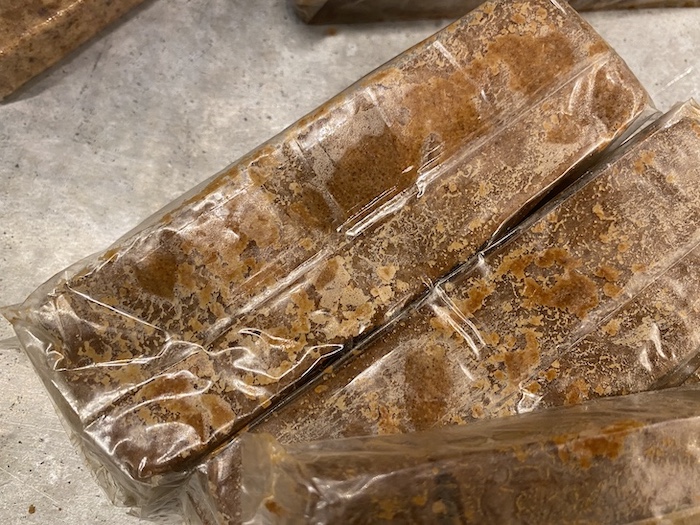
You are reporting the comment """ by on